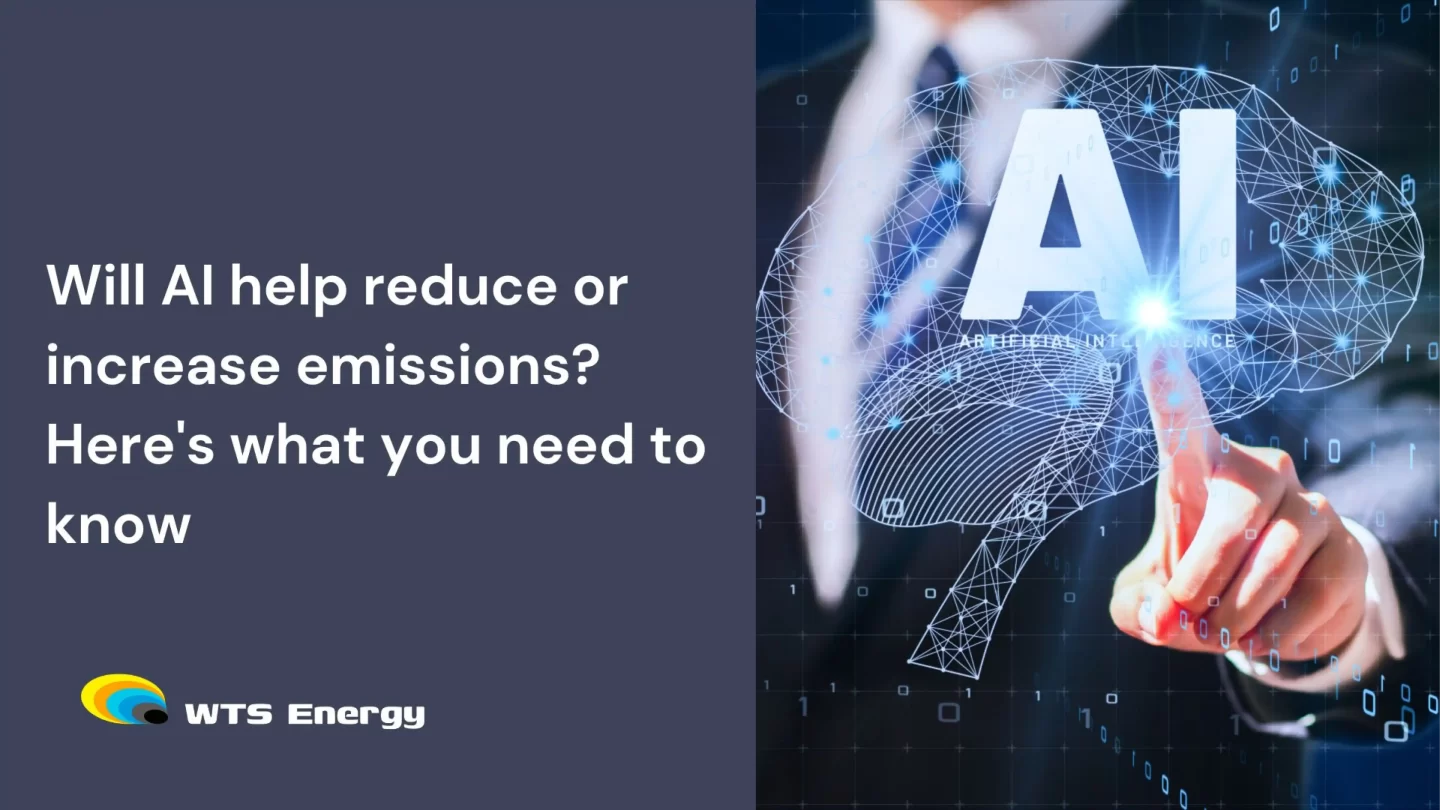Artificial Intelligence (AI) is often seen as a potential solution to climate change. It can optimize energy use, streamline industry and accelerate the transition to renewable energy. But as AI systems become more powerful, their energy consumption is growing rapidly. This raises an important question: Will AI help reduce global emissions, or make them worse?
In this article, we explore the complex relationship between AI and innovation, and examine the balance between its transformative potential and its environmental impact.

The growing energy demand of AI
AI systems, particularly generative models like ChatGPT, require immense computing power. Training and operating these models consume huge amounts of electricity, contributing to rising greenhouse gas (GHG) emissions. For example:
- Training GPT-3 used approximately 1,300 megawatt hours (MWh) of electricity—equivalent to the annual energy consumption of 130 U.S. homes.
- GPT-4, a more advanced model, is estimated to have used 50 times more energy than GPT-3.
- A single AI query consumes 10 times the electricity of a Google search.
ChatGPT has over 100 million weekly users, and its energy consumption is staggering. And so, the pressure on the world’s energy infrastructure is increasing as AI adoption grows.
The broader impact on emissions and energy grids
The technology sector accounts for 2-3% of global GHG emissions, with data centers being a major contributor. Companies such as Microsoft and Google have reported significant increases in emissions due to data center expansions for AI. This trend is likely to accelerate as AI becomes an integral part of business operations.
The pressure on electrical grids is also intensifying. Data centers are already driving electricity demand growth in many regions, and the computational power required for AI is doubling every 100 days. This raises concerns about grid stability and the pace of decarbonization, especially as renewable energy adoption struggles to keep pace with rising demand.
Does AI help reduce emissions? The complex relationship between energy and AI
The huge energy demand of AI is a challenge, but it also offers opportunities to transform the energy sector. For example, renewable energy sources such as wind and solar are variable by nature, often resulting in overproduction during peak periods and underproduction during slack periods. AI can analyze data to predict renewable energy output with incredible accuracy. This allows load shifting, where energy-intensive tasks such as AI training are scheduled during periods of high renewable availability, and improves grid stability by balancing supply and demand, reducing reliance on fossil fuel-based backup power.
AI is significantly improving energy efficiency across various industries by optimizing processes and reducing waste. Here’s how:
Manufacturing
AI-powered predictive maintenance minimizes energy waste and reduces downtime.
Smart Buildings
AI optimizes heating, cooling, and lighting, cutting energy consumption by up to 20%.
Agriculture
AI-driven sensors and satellite imagery enable precision farming, enhancing the efficient use of water and fertilizer.
Beyond efficiency, AI is supporting innovations in energy storage, grid management and carbon capture. For example, data center operators are exploring hydrogen and small modular reactors (SMRs) to power AI infrastructure sustainably. AI is also optimizing Direct Air Capture (DAC) technologies that remove CO2 from the atmosphere, a promising tool in the fight against climate change.
The path to finding the sweet spot: How to balance AI and sustainability
Finding the sweet spot between challenges and opportunities will be key to getting the answers we need. This will required collaboration across industries, governments, and technology providers.
Key priorities include:
Energy-Efficient Hardware:
Innovations like NVIDIA’s “superchip” promise a 30x performance improvement while using 25x less energy.
Greener Data Centers
Advances in cooling technologies and renewable-powered facilities are reducing the carbon footprint of AI infrastructure.
Regulatory Frameworks
Policies requiring energy transparency for AI systems are emerging, such as the European Parliament’s mandates.
The bigger picture
When we think about how to fight climate change, AI provides efficient solutions, but it also brings challenges. It is very important to find the right balance between the amazing work AI can do and how much energy it needs. By energy-efficient technologies and sustainable practices, we can use AI to better protect our planet for future generations.
Follow us on LinkedIn
See our latest insights about the energy and infrastructure sectors



